Andrew Paul Wood – 3 December, 2014
The whole installation operates as a kind of diptych. A clinical disapproval of contemporary whaling is counterpointed with psychogeographical references to Peraki on Banks Peninsula which was a station for sealing and whaling in the nineteenth century, and an area that Johns came to know as a child.
Christchurch
Paul Johns
South Pacific Sanctuary/ Peraki, Banks Peninsula
Curated by Ken Hall
8 November 2014 - 25 January 2015
Paul Johns’ South Pacific Sanctuary / Peraki, Banks Peninsula is a wonderful example of how art can be political without bludgeoning its audience into stupefaction. Johns is an amazing artist, truly a one off with a continually evolving practice that has never fitted tidily into a box, which has tended to restrict awareness of his work mainly to Christchurch and a handful of clued-up people around the rest of the country. Whales and whaling are the nail by which this installation hangs, though Johns himself admits that it was more opportunism and his attitude to animal life in general, than a particular reverence for ocean mammals. As Johns says in an interview with artist Rob Hood for the Christchurch Art Gallery Bulletin (Spring 2014):
“It could be any animal. Selecting the whale was more about timing. Originally I was responding to a fundraising television advertisement - ‘Make an instant $3 donation. Text PIG to 4419.’ I intended to make reference to caged pig farming for an exhibition at the High Street Project gallery; a proposed exhibition for the Physics Room gallery coincided with the season associated with Japan returning to the Southern Ocean.”
To an extent, there has always been a strong element of melancholy, or at least pathos, in Johns’ photography, going back to the homoeroticism of the early 1980s through to the hermetically gnomic tableaux and landscape of the 2000s, a compassionate response to the marginal and a quasi-mystical yearning for universalism. Clearly Johns is anti-whaling on principle; the absurd masquerade whereby Japanese ships enter the Southern Ocean on the pretext of doing scientific “research” on Minke whales, but really just harvesting the meat for sale in Japan and what happens in Vegas stays in Vegas. This manifests in the installation as wall texts; email correspondences with New Zealand anti-whaling activist Pete Bethune (famously arrested and convicted by a Japanese court on charges of assaulting a sailor on a Japanese whaling vessel on the high seas when Bethune was with the Sea Shepherd organisation), and posters anti-whaling protest posters designed by the artist. This documentary element has a slightly Billy Apple feel to it, though perhaps slightly more engaged; the politics are present without being overly assertive and disrupting the dominant aesthetic - minimalist, modernist, bold and sans serif. The message isn’t permitted to overwhelm the medium.
The whole installation operates as a kind of diptych. A clinical disapproval of contemporary whaling (you couldn’t really call it visceral disgust- it’s more dispassionate than that, a kind of curiosity about an alien mind-set) is counterpointed with psychogeographical references to Peraki on Banks Peninsula which was a station for sealing and whaling in the nineteenth century, and an area that Johns came to know as a child. Peraki is present as a series of beautiful seascape photographic prints and a handful of historical references. The two parallel narratives are linked together by a third set of elements which are more ambiguous: in a vitrine in the smaller space is a large piece of old whale bone dating back to the peninsula’s whaling days (dare one suggest a faint mocking allusion to Damien Hirst. Another historical reference is a book on display in the larger space, The Piraki Log (E Pirangi Ahau Koe) Or Diary of Captain Hempleman (Oxford University Press, 1910) open to a particularly sublime Caspar David Friedrich-esque photograph of a lone figure standing on Lookout Rock.
Also in the larger space is a large canvas painted white with a single horizontal black bar on it. While this may be a deliberate echo of the stylised mouths in a work like Do not stare (2003) with a suggestion of Deleuzian faciality (a mouth can eat whale meat or it can protest) a more basic reading is that it is a negative sign (the subtraction of whales, a symbolic “no”). As a negative sign it parallels the horizontal bard of the neon tubes in the smaller space (neon is a motif frequently used by Johns, but perhaps distantly evoking the bright lights of Tokyo) and even the whale bone itself. The painting previously appeared in the above mentioned and ponderously titled Johns show Dear Paul. Thanks for your email. Usually the Japanese Government doesn’t release hunt details. Their quota for summer is around 850 Minke Whales and 20-50 Fin Whales. Kind Regards, Anna P. at the Physics Room in 2009 where it was deliberately mirrored in neon in another work, justifying the connection. This present installation incorporates elements of the Physics Room incarnation, by fleshes it out into a Situationalist experience by relating it to New Zealand’s history, and is all the richer for it.
Andrew Paul Wood
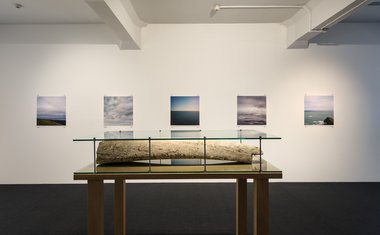

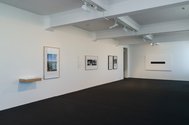
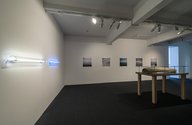
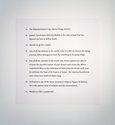
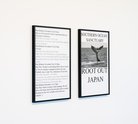
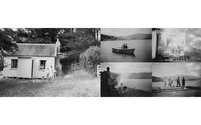
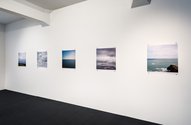


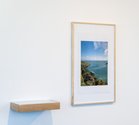
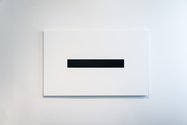
 Advertising in this column
Advertising in this column Two Rooms presents a program of residencies and projects
Two Rooms presents a program of residencies and projects



This Discussion has 0 comments.
Comment
Participate
Register to Participate.
Sign in
Sign in to an existing account.